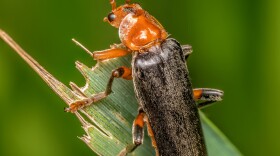As long as the weather is favorable, you can walk out your door and find some amazing insects to observe almost anytime.
And while they are all beautiful in their own way, some of the species you will find are different. Different in the fact that they should not normally be here.
It’s estimated that up to five percent of insect species in the United States are non-native. Some were introduced by mistake, perhaps hitching a ride on a shipment from another country.
Some were introduced on purpose as a way to try and control undesirable insects like aphids or non-native invasive plants.
But regardless of how they got here, they are here to stay and often have negative impacts on other native species of insects, plants, and animals.
A prime example is the Spotted Lantern Fly.
Native to parts of China and Vietnam, the Spotted Lantern Fly was first discovered in Pennsylvania in September of 2014. It’s thought that an egg mass hitched a ride on a shipment of stone.
Ten years later (by 2024), lantern flies have been confirmed in 16 states up and down the east coast and into the central US.
Unfortunately, their spread comes with a cost. As a type of insect that feeds on plant sap, they impact the health of the dozens of plants and trees they feed upon and are a significant threat to crops like grapes, apples, and hops.
Researchers are exploring the introduction of a parasitoid wasp from Asia that feeds on lantern flies …but introducing a non-native species to control another non-native species obviously raises a lot of concerns.





